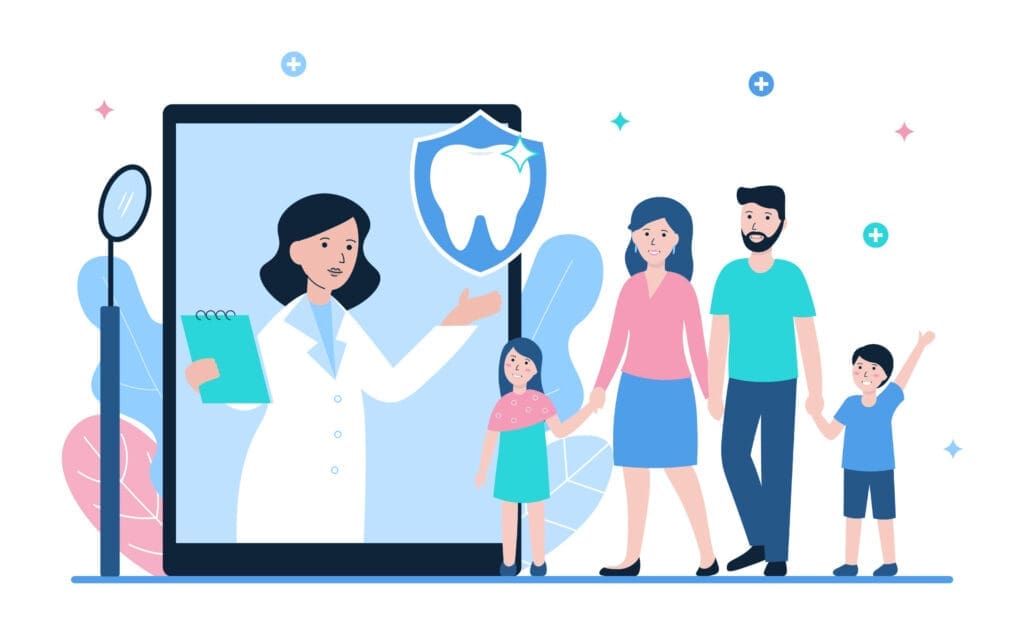Last updated on February 21st, 2024 at 04:06 pm
(This article is part two in a series of three articles covering New Patient Acquisition. For Part I, click here.)
 In Part I, we covered the three components of New Patient Acquisition (Marketing, New Patient Management and Service) with a focus on Marketing. In this week’s article, we’ll dive into the second component – New Patient Management.
In Part I, we covered the three components of New Patient Acquisition (Marketing, New Patient Management and Service) with a focus on Marketing. In this week’s article, we’ll dive into the second component – New Patient Management.
New Patient Management
The term “New Patient Management” can mean any number of things. For our purposes in this article, the term “New Patient Management” will cover:
1. How prospective new patients are handled when they call in.
2. The scheduling procedure used.
3. How the office ensures the new patient actually arrives.
What happens when a patient shows up to the office will fall under the heading of “Service,” which we’ll cover next week.
As we covered last week – marketing’s job is to create a phone call or other form of contact to your office. Your marketing’s effectiveness could be measured by tracking the number of “responses” meaning phone calls or contacts generated by a particular marketing effort.
This brings us to a hardbound rule: ALL new patient inquiries of ANY kind MUST be kept track of and broken down by source (i.e. Radio Ad, Yellow Pages, referral, etc).
I mention this now, as most offices don’t track the number of new patient inquiries; they only track number of new patients.
Failing to track your new patient inquiries puts you at a loss when attempting to determine:
a) Whether any type of a marketing effort is actually working and
b) Whether your front desk person is handling new patient call-ins properly.
c) If your office has a procedural problem (i.e. the procedure followed to schedule new patient appointments).
I can’t stress how important this is. While most yellow page ads track the number of calls by using a different phone number, your best bet is to have a mechanism that does this with ALL new patient inquiries.
I could spend hours telling you stories of offices that had 50 new patient call-ins to schedule 3 people. Front desk contact, while not the only problem with new patient acquisition, accounts for much more of the problem than you might imagine.
It has nothing to do with whether your receptionist is a nice person. Chances are your receptionist is great. The problem most often lies in how they handle the new patient call-in.
Assuming you’re tracking inquiries, you can compare the number of calls and contacts to the number of people who actually scheduled. From this you can work out:
- If your front desk is doing a good job handling these calls and
- What marketing is working and what isn’t.
First Contact – The Right attitude
 The biggest mistake I’ve seen with new patient inquires has to do with the attitude of the person answering the phone. Again, this is not to say that your receptionist is mean or rude. The problem in attitude is that they need a clear cut idea of the end result they are going for. Too many receptionists think their job is to “answer the phone” or “answer questions.” With the amount of money you might be spending to get the phone ringing – this becomes very important.
The biggest mistake I’ve seen with new patient inquires has to do with the attitude of the person answering the phone. Again, this is not to say that your receptionist is mean or rude. The problem in attitude is that they need a clear cut idea of the end result they are going for. Too many receptionists think their job is to “answer the phone” or “answer questions.” With the amount of money you might be spending to get the phone ringing – this becomes very important.
When it comes to new patients, their job is very simple – get the new patient in and in the chair!
Having said that, you’d be surprised how many front desk staff interrogate a new patient inquiry for ten minutes to determine if this is a “quality” patient, or some such thing. I’ve even seen cases where the new patient inquiry isn’t even asked to set an appointment – but told to call back when they “can get their full mouth x-ray from their last dentist.”
Keep it simple – make the person feel happy to have called. Have a caring attitude and listen to what the person wants. Your front desk person is not a “gate keeper” who scrutinizes people to determine who they’ll let in the door. A person calling your office for the first time has no idea who you are. Establish good communication, get any needed information and get them scheduled and in for the appropriate type of appointment. Don’t get into a long philosophical discussion about your office, dentistry, the insurance industry, etc. You’re not going to find out everything there is to know about a patient or clue them into everything about your office over the phone. You’re better off sorting out who’s who when a patient is in your office, face-to-face, not over the telephone.
Now, I know you might have questions about what to do with people who are out-of-network or “shoppers.” I have an excellent four-page write-up titled: “Getting New Patients in the Door” from an MGE client who has a very high new patient conversion rate. This write-up deals with specifics as to how to handle new patient inquiries. If you’d like a copy, click here and fill out the form and we’ll email it to you.
Scheduling Errors
OK, so your marketing is working, and your receptionist does a good job with new patient inquiries. Everything should be great – right? It should be – unless you make an error in scheduling.
To determine this, ask your Office Manager or receptionist to come and see you for a minute and ask them:
If a new patient were to call in right now for a “cleaning” (not an emergency), when is our first available appointment for:
- After 4 PM
- First thing
- Between 10 AM and 12 PM.
If any of those come up as more than a couple of days – you could be blowing new patients off.
Making a prospective new patient wait weeks (or even one week) will cost you. Sure some people will show up, but who likes to wait?
The lesson here is: Make sure your schedule is arranged (somehow) to accommodate new patients preferably within 24-48 hours.
Parting Shots
We recently held the MGE Owner’s Conference. For those of you who don’t know, the Owner’s Conference is a seminar where MGE graduates meet to update their skills and share successful actions.
During the Round Table section of the Owner’s Conference (an open forum where ideas are shared) a number of very useful ideas came up with relation to new patient acquisition. I’d like to share one idea in particular that a client shared (which another MGE client had suggested) and I found very intriguing: Have the doctor him or herself confirm new patients the night before. The client who discussed this said his new patient no-shows have more or less disappeared since instituting this. You wouldn’t call just to “confirm” – you could call and say you wanted to call ahead and see if they had any questions before you meet the next day, etc. Whatever, you feel like here is OK. Patients are pretty impressed with a doctor phone call. And, if you have five or six new patients on the books for the next day, this wouldn’t take very long.
Summary
Improve your new patient numbers by:
- Tracking your incoming new patient inquiries (regardless of where they come from).
- When it comes to new patients, make sure your front desk person is focused on “getting them IN THE CHAIR,” instead of something else.
- Make sure you can accommodate new patients FAST – don’t make them wait.
(For Part III in this series, click here.)
Jeffrey Blumberg provides this general dental practice management advice to furnish you with suggestions of actions that have been shown to have potential to help you improve your practice. Neither MGE nor Mr. Blumberg may be held liable for adverse actions resulting from your implementation of these suggestions, which are provided only as examples of topics covered by the MGE program.


One Response to “New Patient Acquisition, Part II”